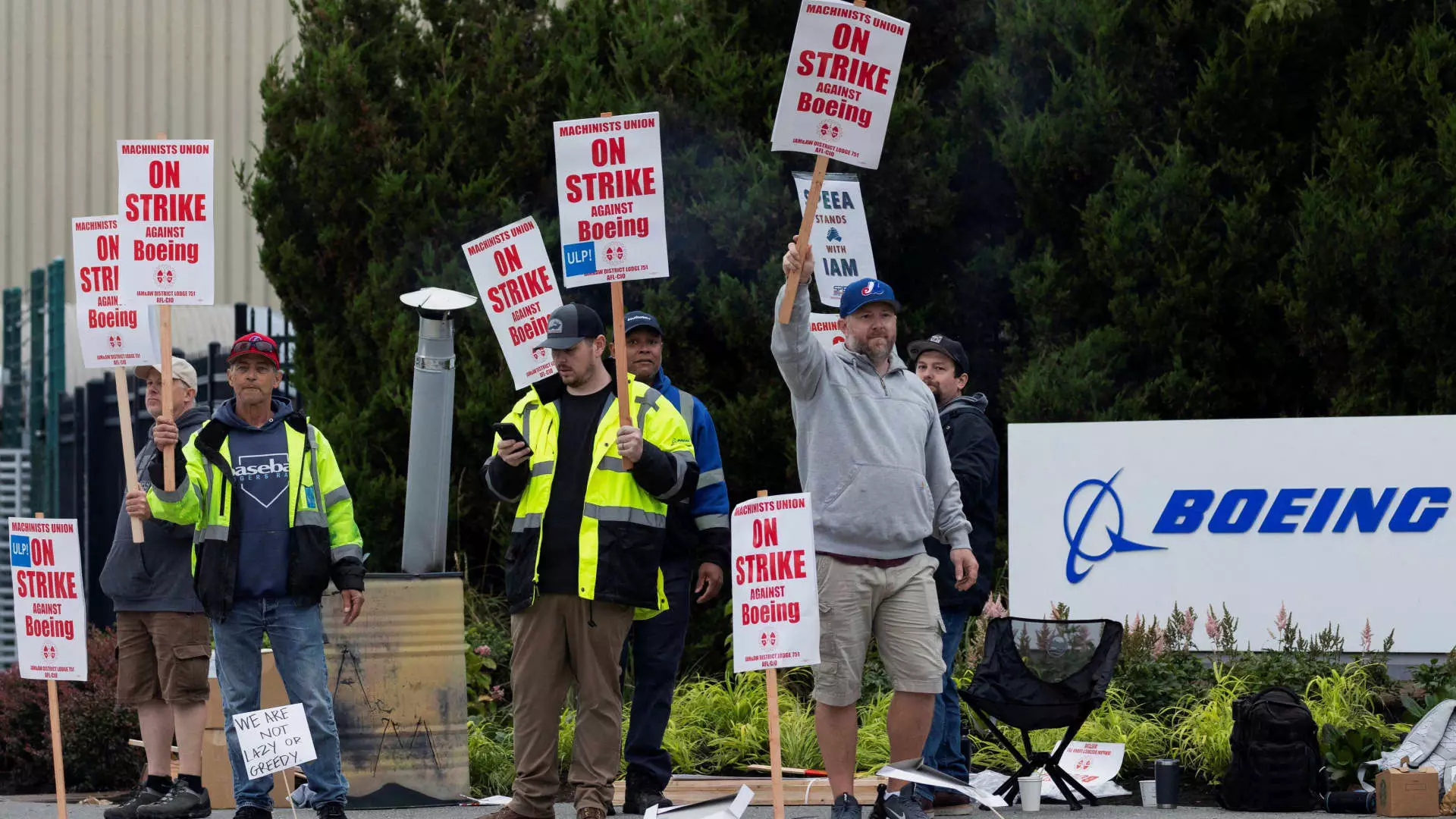Boeing, a name synonymous with aviation, finds itself grappling with a significant challenge as machinists in the Pacific Northwest have embarked on a strike demanding higher wages. This labor dispute, which spans various aspects of the company’s operations, raises pressing concerns regarding both immediate financial implications and long-term repercussions for the aerospace giant. As Boeing navigates the complexities of this strike, understanding its impact on the company and the broader industry remains crucial.
Beginning in mid-September, over 30,000 Boeing machinists ceased work after overwhelmingly rejecting a tentative labor agreement. The strike, fueled by growing frustration over stagnant wages amid an escalating cost of living in the Seattle area, places immense strain on Boeing’s already fragile financial condition. With estimated losses climbing to around $50 million each day, the work stoppage halts production of several aircraft, exacerbating the company’s already concerning debts—totaling around $60 billion.
The machinists are not only advocating for salary increases but also seeking better overall compensation packages, including annual bonuses and pension reinstatement, which reflects a broader labor movement across various industries. As workers become increasingly vocal in their demands, the scale of the challenge for Boeing is evident.
The realities faced by striking workers underscore the personal and financial dimensions of labor disputes. Many machinists, having saved up in anticipation of the strike, are now turning to side jobs in landscaping and moving services to bridge the gap. This shift demonstrates the lengths to which employees are willing to go when pushed by economic pressures.
Jake Meyer, a Boeing mechanic, encapsulates the struggle by highlighting the pride he takes in his work even as he strives for higher compensation to keep pace with soaring living costs. The affordability crisis in the Seattle housing market is particularly acute, with median home prices skyrocketing 142% over the past decade, far surpassing the national average increase. These conditions present a stark contrast to the corporate environment in which union negotiations occur.
Boeing’s financial landscape paints a sobering picture. The company has not posted a profit since 2018, and recent operational crises have compounded its troubles. Following a catastrophic incident involving its 737 Max aircraft, Boeing’s expenditures this year have already reached an alarming $8 billion. The potential for a credit rating downgrade is a considerable concern, as it would further spike borrowing costs.
With the company’s financial health teetering, the urgency to resume production is palpable. However, continued strife with its workforce jeopardizes this goal. The labor negotiations have yielded little progress, leaving both parties frustrated and uncertain about the next steps. While Boeing’s proposal included a 25% wage increase over four years, union representatives have indicated that this falls short of the 40% increase sought.
The ongoing strike should be viewed as part of a larger trend in the labor market, where workers across various sectors are uniting for improved conditions. Recent victories in labor negotiations for airline employees and autoworkers reflect a growing awareness among workers of their negotiating power in a tight labor market. The Biden administration has also encouraged both Boeing and the union to reach a timely resolution, highlighting the interconnectedness of labor relations and economic recovery.
Moreover, the current labor landscape is starkly different from the last notable Boeing strike in 2008, which was resolved in less than two months. The prevailing economic environment is characterized by intense competition for skilled labor, particularly within aerospace and defense sectors. This context heightens the stakes for Boeing as it seeks to retain and hire personnel while also navigating the ongoing strike’s fallout.
As Boeing’s new CEO, Kelly Ortberg, seeks to restore the company’s reputation, the resolution of this strike will significantly influence future operations. The degree of cooperation between management and labor will likely dictate Boeing’s capacity to rebound from its current challenges.
Finding common ground is crucial, not only for the welfare of the workforce but also for the survival of Boeing amid rising global competition and demand for air travel. As negotiations continue, both sides must recognize the importance of compromise to pave the way for a productive and financially viable future for the company.
The ongoing machinist strike represents a critical juncture for Boeing. The financial repercussions are profound, with potential impacts felt throughout the aerospace industry. As the company contends with a labor force increasingly unwilling to compromise, the necessity for a swift and equitable resolution is evident. Striking a balance between employee needs and corporate stability will be vital for Boeing to navigate these tumultuous waters and restore confidence among its stakeholders.


Leave a Reply